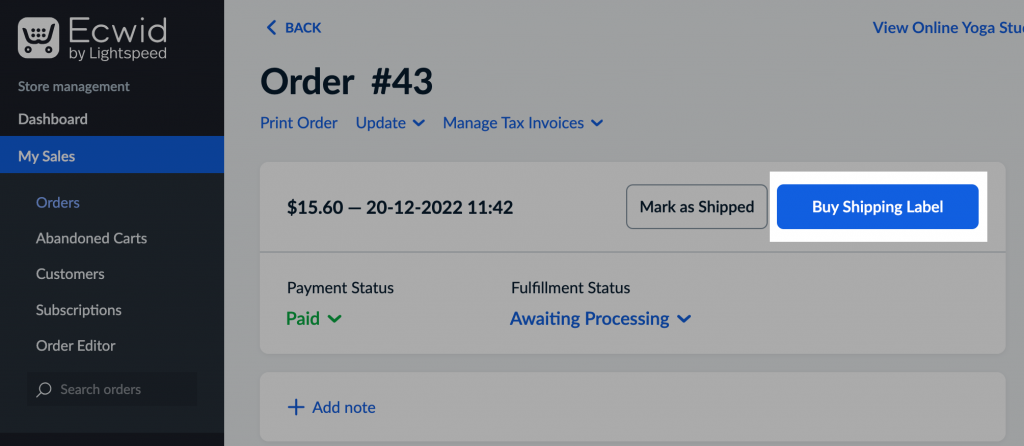
ROI, or return on investment, is not a buzzword — it’s a powerful metric that helps businesses understand their profitability. But how does this apply to ecommerce stores? And, more importantly, how can you make it work for your business?
This blog will walk you through everything you need about ecommerce ROI — what it is, how to calculate it, what benchmarks to aim for, and actionable tips to improve your results.
What Is Ecommerce ROI and Why Does It Matter?
ROI, or return on investment, measures how much profit you’re earning compared to the amount you’ve invested. It’s a straightforward yet critical metric that businesses use to assess the efficiency of their investments.
Formula for ROI
ROI can be measured in various ways, but one of the most widely used formulas for ecommerce businesses is outlined below:
ROI = (Net Profit / Investment Cost) x 100
For ecommerce, ROI is particularly significant because it reflects the profitability of initiatives like ad spend, inventory investments, or paid marketing campaigns.
Whether you’re analyzing the ROI for a seasonal product launch or your overall strategy, it’s a data-driven way to track how well your business is doing.
Remember, there are plenty of ways to calculate ROI. When talking about or comparing ROIs between departments or businesses, it’s a good idea to clarify which formula is used. Each method might focus on a different set of investments.
What Affects ROI in Ecommerce
Unlike traditional retail, ecommerce ROI is influenced by distinct factors, such as digital marketing performance, website user experience, and the scalability of logistics.
Here are a few considerations:
- Digital ads: Every click counts in ecommerce — are your ads converting into sales?
- Customer acquisition costs (CAC): Depending on how much you spend to attract a new buyer, this can heavily affect your ROI.
- Operational costs: Shipping prices and fulfillment processes can make or break your profit margins.
Understanding and managing these unique aspects will help you make smarter, ROI-driven decisions for your ecommerce business.
How to Calculate ROI for Ecommerce
The first step to boosting your ecommerce ROI is knowing your numbers. Once you’ve got that down, calculating ROI is easier than you might think.
To calculate ROI for ecommerce businesses, follow these steps:
- Determine net profit: Subtract all costs (e.g., advertising, inventory, shipping) from your total revenue.
- Divide net profit by cost of investment:
- Convert to percentage: Multiply by 100 for the ROI.
Example: If your revenue is $10,000 and costs total $7,000, your net profit is $3,000.
$3,000 (Net Profit) / $7,000 (Costs) = 0.43
0.43 x 100 = 43%
What Is the Average Ecommerce ROI?
The ecommerce industry is very competitive, so benchmarks can vary by sector and type of business.
Industry Benchmarks for ROI in Ecommerce
Here are some ecommerce ROI insights that can help you set clear expectations:
- Overall ROI: A “good” ROI in ecommerce is generally considered 20% to 50%, which indicates that for every $1 invested, you’re returning $1.20 to $1.50 in profit.
- ROI for advertising campaigns worldwide is $2.43, meaning advertisers earn $2.43 for every dollar spent.

Median ROI of successful ad campaigns worldwide, 2017-2023 (Source: Statista)
What Is a Good ROI for Ecommerce?
While benchmark figures provide helpful guidelines, remember that a good ROI depends on your goals and operational costs.
If you’re running a luxury brand, your margins — and therefore your ROI — might naturally be higher. Conversely, a high-volume, low-cost model might prioritize market penetration over short-term profitability.
The average ROI for online businesses can vary significantly depending not only on the industry but also on the stage of the business.
For instance, a startup may experience a negative ROI in its early years due to heavy investments in research and development. In contrast, a well-established ecommerce business might achieve a healthy ROI of around 20%.
The key is to consistently track and optimize your ROI in alignment with your specific business model.
Tips for Boosting Ecommerce ROI
Once you’ve calculated your ROI, the real work begins: boosting it sustainably. Below are some proven strategies that ecommerce businesses can use.
Remember, blindly following advice from the internet isn’t always the best approach. Start by taking a closer look at your current operations, marketing, and customer service.
Once you spot where the biggest costs or inefficiencies are, you can focus on creating a plan to tackle those.
The ideas below are definitely helpful, but your business might already be using them — or you might have other areas that need more attention.
Optimize Your Marketing for High Returns
Effective marketing can dramatically increase your revenue while minimizing investment. Here are some strategies to focus on:
- Retargeting ads: Target shoppers who’ve already shown interest in your products to convert at a lower cost.
- Email campaigns: Build loyalty with personalized messages or exclusive subscriber discounts. On average, email brings in $36 for every dollar you spend — that’s a better return than any other channel.
- SEO: Although this approach requires more time, it can be cost-effective when done right. Drive organic traffic with product pages and blogs optimized for keywords relevant to your niche.
Read the article below to learn more about improving ROI for marketing campaigns:
If you sell online with Ecwid by Lightspeed, you’re in for a treat! Along with a powerful online store, this ecommerce platform gives you handy tools for running retargeting ads, email marketing, and improving your SEO.
Streamline Operational Costs
Operational costs of an ecommerce business can include inventory management, shipping and fulfillment, and customer service. These costs can quickly add up and eat into your profits if not properly managed.
Here are some ways to reduce operational costs:
- Use inventory management software to reduce stock wastage by tracking inventory levels, monitoring expiration dates, and ensuring optimal stock levels at all times
- Partner with efficient warehousing and shipping providers to minimize shipping costs and ensure timely delivery to customers
- Negotiate with suppliers for the best prices for bulk orders or negotiate better payment terms.
If you run your online store with Ecwid by Lightspeed, you’ll love the built-in tools for managing inventory, like stock tracking and low-stock alerts. On top of that, Ecwid helps you save money on shipping with discounted rates for shipping labels.

With Ecwid, you can buy shipping labels right where you manage your orders
Enhance Customer Experience
Happy customers = loyal customers. This increases repeat purchases, which is more cost-efficient than acquiring new buyers. Try:
- Simplified checkout: Streamline the purchasing process by removing unnecessary steps to improve your conversion rate. A smooth checkout keeps customers engaged and reduces cart abandonment.
- Flexible returns: Offer a customer-friendly return policy to reassure hesitant buyers, making them more likely to complete their purchase. This approach minimizes the risk of bad reviews or lost sales.
- Product reviews and FAQs: Provide product reviews and clear answers to common questions to build trust through transparency. This helps customers make informed decisions, boosting confidence in your products.
If you run an Ecwid store, you can easily improve the customer experience. Tools like a smooth checkout process, product reviews, live chat, or self-service options like an FAQ can make a big difference.

A review showcased on a product page within the Ecwid store
Leverage Analytics
Data is your secret weapon for fine-tuning every corner of your business, helping you make smarter decisions and drive better results. For instance, it can reveal customer behavior trends and identify areas for growth or improvement.
Here are some ideas to leverage data:
- A/B testing: Regularly test new product pages, ad creatives, or loyalty incentives to see what drives better results.
- Analytics platforms: Use in-depth reports to monitor trends and proactively refine underperforming areas.
Ecwid stores include built-in reports that show how your online store is doing. You can track revenue, visits, conversions, the results of your marketing campaigns, and more. This helps you make informed decisions about your business rather than relying on guesswork.

Use Ecwid’s reports to understand shoppers’ behavior better
Start Boosting Your Ecommerce ROI
A healthy ROI is one of the indicators of your ecommerce business’s success. Understanding what drives ROI, calculating it, and committing to improvements will enable you to create scalable, long-term growth.
From fine-tuning your marketing strategy to enhancing customer experience, every tip shared here can help you move one step closer to your goals. Start tracking your ROI today and see where you can make adjustments — it’s never too late to increase your returns.
Looking for tools to streamline your processes and grow even faster? Check out Ecwid’s ecommerce solutions to build a thriving business.
The post Boosting Ecommerce ROI: Top Ways to Increase Returns first appeared on Ecwid | E-Commerce Shopping Cart.
This articles is written by : Nermeen Nabil Khear Abdelmalak
All rights reserved to : USAGOLDMIES . www.usagoldmines.com
You can Enjoy surfing our website categories and read more content in many fields you may like .
Why USAGoldMines ?
USAGoldMines is a comprehensive website offering the latest in financial, crypto, and technical news. With specialized sections for each category, it provides readers with up-to-date market insights, investment trends, and technological advancements, making it a valuable resource for investors and enthusiasts in the fast-paced financial world.

